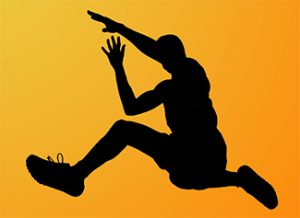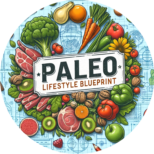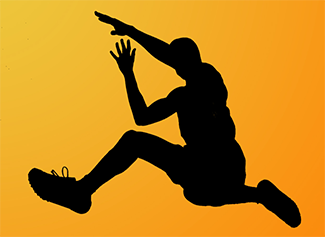A lof of athletes have the misconception that a Paleo Diet for Athletes is some sort of radical shift in their current diet. Therefore, athletes committing to any kind of physical endurance shouldn’t risk doing it right? Wrong! Paleo is one lifestyle that not only promotes good overall health, it does not require any yo-yoing before, during or after training. You simply eat this way all the time.
 While it is true that most athletes eat a pretty healthy diet to begin with, most athletes have far too much starch and carbohydrates in their bodies. By cutting out the starch and carbs, and adding more paleo foods the body begins to heal itself. It is not running on empty fuel any longer. It is now using the fuel it is intended to use.
While it is true that most athletes eat a pretty healthy diet to begin with, most athletes have far too much starch and carbohydrates in their bodies. By cutting out the starch and carbs, and adding more paleo foods the body begins to heal itself. It is not running on empty fuel any longer. It is now using the fuel it is intended to use.
Many athletes following a Paleo Diet for Athletes swear by it. There are records of several athletes developing gluten intolerances and without knowing it, suffering needlessly for quite some time. However, when these athletes switched to a paleo diet for athletes they were feeling better within days and no longer needed to rely on the starches they were using to build energy, but ultimately making them sick.
There are misconceptions that after an intense workout the body needs the glucose found in starchy non-paleo foods. It is true that the body needs to rebuild the glucose lost to the workout, but the athlete need not rely on these foods. There are plenty of paleo foods high in glucose that are much healthier (and easier for the athletic body to digest) than starchy pastas and other grains. An athlete following a Paleo Diet could consume apples, strawberries and watermelons as a good sources of glucose while leafy greens like spinach and kale are excellent sources of the proteins needed to regain energy and strength.
…switching to a paleo diet for athletes may seem like a difficult switch to make at first…
You can also find the nutrients needed by an athlete in foods like yams and dates. At first switching to a paleo diet for athletes may seem like a difficult switch to make, however, once you have done it, it quickly becomes second nature and your body will thank you! For every non-paleo food you are currently eating (but need for the nutrients it provides) there is an equal and dare I say healthier Paleo friendly option.
If an athlete thinks ahead of the game and prepares a few paleo smoothies for before and after workouts, maintaining the nutrients needed is not hard to do. High protein breakfasts of eggs and pork will give you the energy you need for your morning and a high protein spinach/carrot/apple smoothie can bring you on through lunch. Add in some dates, almonds and other fruits and veggetables as snacks and you are well on your way to a completely healthy, completely paleo diet an athlete can sustain. Perhaps a nice stew for dinner with yams in place of baking potatoes.
The Paleo Diet for Athletes is about more than just what you are eating and how. It is about long term health. When your body is in better health, you are able to excercise more efficiently. You are sick less often and your risk of disease and auto-immune problems decreases greatly. There are many benefits to eating a paleo diet if you are an athlete.
There is finally a diet that is truly very good for your mind and body. No calorie counting, no stocking up (and consequently crashing) on carbs and sugars. Just a good overall diet high in protein and good fats. The biggest reason we find it more difficult to make the switch to paleo, especially as athletes who are typically used to a very particular set of foods, is because a lot of the foods are new to us. But, that doesn’t make them taste bad or mean that they cannot replace the proccessed starched foods we are eating now. Once the brain realizes it is going to eat a Paleo Diet for Athletes from now on, it doesn’t care that it used to eat baked potatoes and pastas with every meal.

